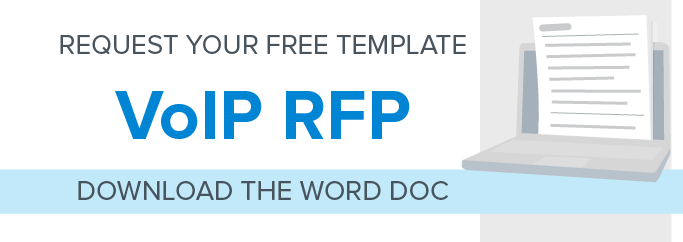What is an RFP?
RFP stands for Request for Proposal, and it’s just as it sounds—it’s a document that solicits proposals. Oftentimes these proposals are made through a bidding process, by an agency or company interested in procurement of a commodity, service, or valuable asset, to potential suppliers to submit business proposals. It’s the process by which most large organizations make large purchases.
For example, an RFP is the way the US Department of Defense buys an F-18. An RFP is a complete list of requirements and specifications for the F-18 and the expectations of the company that, if selected, will build it. As you can imagine, you wouldn’t want to buy an F-18 that didn’t have all the features and functionality you need. And you wouldn’t want to buy it from a company with no experience building fighter jets.
How to Write an RFP
Writing an RFP requires a lot of organization and preliminary research. Because an RFP is the way many organizations buy phone systems, Jive has employees who are experts in responding to RFPs. Our RFP experts put together resources to help you prepare and write an RFP. We have RFP examples and even created a free template for you to download.
RPF Examples and Tips from Jive’s Expert
We talked to Jive RFP expert, Kayly Shelton, about some additional tips. Because Kayly responds to hundreds of RFPs, she’s identified tips that will make your RFPs more effective.
# 1. Be Specific
An RFP is a tedious document to write, but the details matter. For example, when you’re describing your current situation, what you need, and what you’d like, be specific and detail oriented. If you don’t clearly illustrate the scope and your specific needs, you’ll have to work hard trying to find the perfect fit.
Kayly gave the example of times she read RFPs for phone systems that were missing important details like:
- Current network environment: phone counts, types of phones, switches, etc.
- Mandatory phone features: what features are non-negotiable.
- Desired features: what features are desired, but not dealbreakers.
# 2. Include Submission Details
If you want people to respond to your RFPs, they need to know how to do so. It seems like a no-brainer, but within the byzantine genre of RFPs, important details like submission guidelines are often forgotten. So be sure to include how you want people who respond to submit (e.g., snail mail, email, uploaded to an online portal, etc.).
# 3. Proofread Before Submitting
Along with proofreading for commas and spelling mistakes, especially look for contradictory information. For example, Kayly just responded to an RFP that said “responses from both on-premise and hosted providers will be considered,” but a few pages lager it stated that the district was looking for an “on-premise solution.”
If you utilize Jive’s template and focus on these three tips, they will help your entity receive the best responses and enlist the best options possible.

